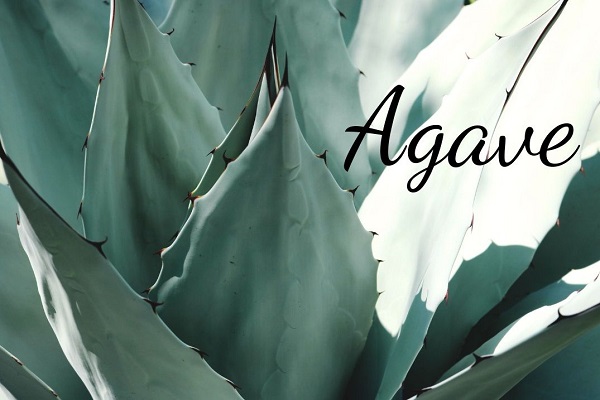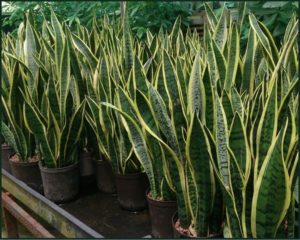Agave (Uh-GAH-
All About Growing Agave
In this Post We'll Cover:
{Please note, some links in this post may be affiliate links to sites that pay me a small commission if you click on the link and make a purchase. This commission is at absolutely no cost to you. I only recommend products and companies that I have worked with and truly love! ~Kat}
About Agave

photo credit FarOutFlora (CC BY-NC 2.0)
This handsome, structural plant forms large rosettes with little to no stem, and a diameter that reaches from 1-20 feet. Most, like this Agave shawii, have long, sharp spines at the terminal point of each leaf, and often
Agaves typically grow in shades of blue, green and silver, though some have wonderfully variegated foliage with a creamy yellow added to the color mix. In the garden or large containers, a single agave makes a striking focal point.
Agave Plant Care Basics

Agaves thrive in full sun, all day long. Where summer temps are extremely hot, they can
Agaves will thrive
Spikey Agaves Are Not Cactus

Many species of agave have ferocious spikes on their leaves. They should not be planted close beside walkways, or where pets or small children are likely to play with them. Also, agaves are somewhat toxic if eaten, so take that into consideration with your pets. Agaves are not cactus, however their spikes do perform the same functions as the spines of a cactus. Agave spikes:
- Protect the stored moisture from thirsty animals
- Break up air flow around the plant, to prevent drying
- Collect dew and funnel it to the plant
As agave develop, opening from a tightly furled bud, the spines of the outer leaves imprint lasting impressions on the inner leaves. These scalloped “bud imprints” can be quite decorative and intriguing.
Spineless Agave

Though most agave species do have fierce spikes, some are completely thornless. These agave varieties are said to be “unarmed”. Interestingly, when you consider the functions performed by the thorns, unarmed agave can tolerate much more shade than the spiny varieties.
Thornless agaves make for wonderful border
Agave Blooms

Most agaves are monocarpic, meaning they bloom just once before they die. However, they take years to mature before they do bloom, and typically form many pupsSucculent pups are the baby succulents that form at the base... at the base of the mother plant before it blooms. Only the mother plant dies after blooming, the pups continue to grow and mature for years.
Agave flower spikes are enormous, towering well above the plant, with long-lasting blooms that are highly attractive to pollinators, including butterflies, hummingbirds
Harvesting Agave

Several agave species are grown as agricultural crops for several uses. Agave tequilana, the blue agave, is the source of tequila. Several species produce a super sweet nectar marketed as a substitute for sugar and honey safe for diabetics. While agave plantations are large and modern, the plants are still harvested by hand, by growers who have passed the
Cold Hardy Agave Plants

Although most agaves won’t tolerate a hard freeze without damage, some, like the lovely Agave victoria-
Agave Snout Weevil

The agave snout weevil is a nasty, little black beetle just 1/2 inch long that can take out a mature agave the size of a VW bus. These are slow-moving pests that thankfully cannot fly. But they are hard to see on your plants because they hide in the soil and between the leaves at the base of the plant. Often, your first indication that you have snout weevil is the complete collapse of your beautiful plants.
The most likely way for snout weevils to enter your garden is in the soil or the leaves of a new agave plant. Take the time and care to closely inspect any agave before you plant it. Remove all the soil from the roots, and carefully wash the roots in a tub before planting. That way, any grubs or adult weevils will wall into the tub, rather than your garden soil or container. Then, carefully look at the base of the leaves and between the leaves for any sign of penetration. Remove and destroy any larva or beetle you find.
Some agave species are highly resistant to the dreaded snout weevil, including Agave
Preventing Agave Snout Weevil
Prevention is the key to protecting you agave from snout weevil damage. Always inspect new plants as described above. And take action now, today to protect any agave you own.
To protect your agave plant, and to prevent snout weevils from moving in, apply a generous top-dressing of worm castings. This organic fertilizer provides vital micronutrients to your plants, but more importantly, infuses them with chitinase, an enzyme that breaks down the insects’ exoskeleton. Worm castings are an excellent fertilizer and insect repellant for all your succulents. Don’t wait for signs of agave snout weevil on your established before adding worm castings. Once you see weevil damage, it is likely too late to save that plant.
Apply a half-inch layer of worm castings on top of the soil around every healthy agave you own, in the ground or in containers. Cover the worm castings with an inorganic mulch like pea gravel to keep it in place. Every time it rains or you add water, your plant will take in the worm castings. The chitinase infuses the plant until it is carried to every cell. Any insect feeding off the plant will die. Insects can smell the chitinase and will refuse to even land on a plant protected by worm castings.

Agaves are magnificent, east to grow succulents that make an architectural statement in your garden. Choose your agave to suit your climate. Examine it carefully, then plant and enjoy the drama for years of carefree beauty.
If you have any questions about growing agave, please leave a comment. I’ll be happy to answer it. Please note, there will not be a new succulent post until Tuesday, January 8th. I’ll miss you! Have a wonderful holiday, and I’ll see you in the New Year!

P.S. For more succulent care information, please subscribe to The Succulent Eclectic! You’ll receive my free e-course 7 Steps to Succulent Success!




